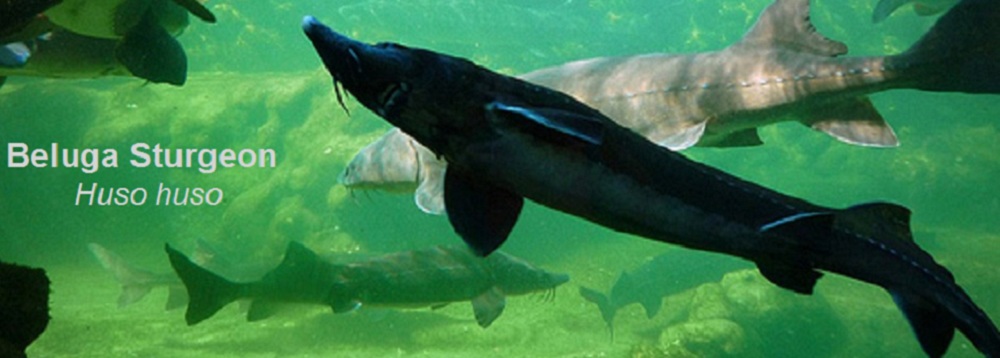Threats and Conservation Acts
The threats against Huso huso are
many, and they are also quite serious. This species has been
listed as critically endangered by
The ICUN
Red List. This rating is the last rating an organism is
given before it is completely extinct in the wild. With a
continually decreasing population trend, action must be taken,
and enforced in order for the species to be saved.
 Humans
are the number one cause of the beluga sturgeon population
decrease. The most obvious reason for the steep population
decrease is the demand for beluga caviar. The eggs from beluga
are so highly prized that these animals are not only fished
legally, but also poached. Fishing quotas have remained the same
regardless the fact that the sturgeons are not found nearly as
frequently in the wild as there once were. Another factor
contributing to the endangerment of sturgeons is the damming of
spawning grounds. Many rivers that were once the breeding
grounds for sturgeon have now been dammed, changing the
currents, river levels, and the distance that these fish are
able to migrate. Lastly, a factor that has not necessarily been
proven to kill off sturgeon, is the use of pesticides on grounds
surrounding the beluga habitat. These pesticides, in high
densities, have the potential to kill the organisms that H.
huso, and its prey, feed on.
Humans
are the number one cause of the beluga sturgeon population
decrease. The most obvious reason for the steep population
decrease is the demand for beluga caviar. The eggs from beluga
are so highly prized that these animals are not only fished
legally, but also poached. Fishing quotas have remained the same
regardless the fact that the sturgeons are not found nearly as
frequently in the wild as there once were. Another factor
contributing to the endangerment of sturgeons is the damming of
spawning grounds. Many rivers that were once the breeding
grounds for sturgeon have now been dammed, changing the
currents, river levels, and the distance that these fish are
able to migrate. Lastly, a factor that has not necessarily been
proven to kill off sturgeon, is the use of pesticides on grounds
surrounding the beluga habitat. These pesticides, in high
densities, have the potential to kill the organisms that H.
huso, and its prey, feed on.
Humans are not all bad though. Although we may have caused
serious damage to numerous sturgeon populations, such as the
Persian Sturgeon, we have also worked to build back the
population. Restocking efforts are in place where farms breed
mass amounts of beluga sturgeon, raise them in captivity until
they are yearlings, and then release them into the wild. This
has caused numbers to decrease less quickly, but all of the same
factors affect the sturgeon that are bred in captivity as those
that are bred in the wild. Some say that there are no "true"
beluga in the wild anymore and that they all have some amount of
stock sturgeon in their blood. Some countries have also taken
action to save these sturgeon by no longer allowing the
importing of endangered species. This has cut down the number of
species that are being sold commercially though poaching still
remains an issue.
To return to the homepage, click here.
